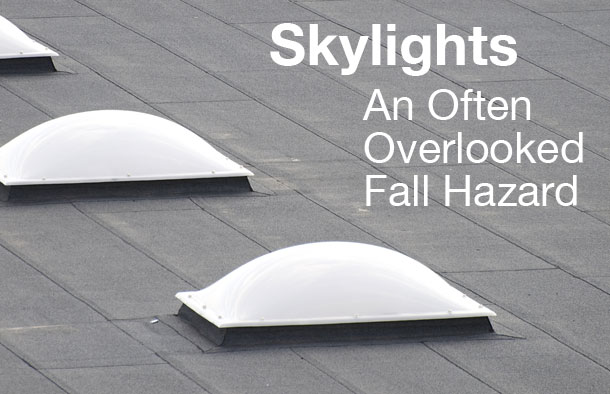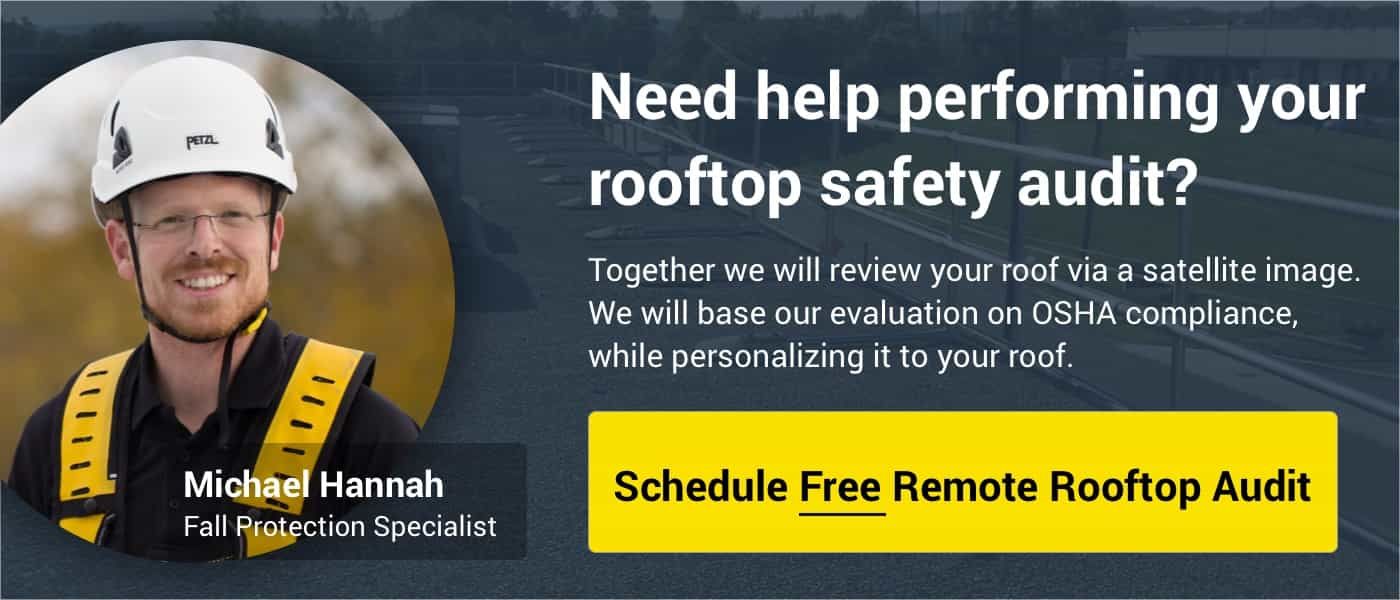Skylights: An Often Overlooked Fall Hazard

If somebody was walking on a construction site and saw a large hole in the roof with nothing around it, they would immediately recognize this as unsafe. It is an opening that leads you to a 30’ drop onto a hard surface.
Skylights are less obvious. Where the drop still exists, there is now a glass or plastic covering separating you. This may lead to a false sense of security. However, the reality is glass and plastic break, not protecting you from the real hazard.
Most skylights are not designed to be structural. Meaning the manufacturer is not anticipating your body weight striking or leaning on their product. They are designed to let in natural light without letting in water and debris from the outside.
Skylights are a hole in your roof.
Holes. The employer must ensure:Each employee is protected from falling through any hole (including skylights) that is 4 feet (1.2 m) or more above a lower level by one or more of the following:
Some argue that once the skylight has glass or plastic covering it, it is no longer an ‘opening’ or ‘hole’. This is clearly not the case according to OSHA.
The question then becomes, “What do we do about it?”
General Industry Solutions
There are several solutions. The requirements for general industry and construction are slightly different, so it is essential that you identify which standard applies to the type of work you are doing.
OSHA identifies for 4 types of fall protection for protecting your skylights:
-
Covers (also referred to as skylight screens)
Construction Industry Solutions
Construction differs slightly in its requirements for skylight protection.
Each employee on walking/working surfaces shall be protected from falling through holes (including skylights) more than 6 feet (1.8 m) above lower levels, by personal fall arrest systems, covers, or guardrail systems erected around such holes.
OSHA has more specifics on this topic when it comes to application and loading requirements that we won't go into here. To learn more, reach out to our team of OSHA specialists here.
Skylight Fall Hazards
In the end, a skylight is a fall hazard that claims the lives of workers each year. Determine the proper protection and install it before further maintenance work is done on your roof.
As a construction company, establish a safety plan to work around skylights just as you would for fall protection in any other stage of your project.
Many rooftop hazards jeopardize the lives of those accessing the roof for work. Allow us to survey your roofs and identify your hazards.

Updated on August 10, 2018 by Josh Borowiec



